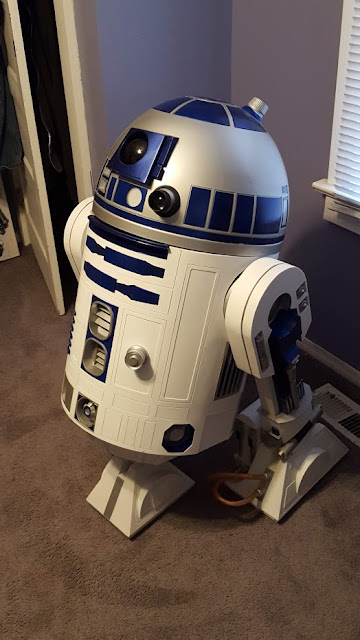Like a lot of my build I decided to make the utility arms from scratch out of wood and was reasonably happy with the results, although in hindsight I would probably have been better off buying resin versions of these, or getting them 3D printed.
I started by making a paper template from the blueprints. I glued this to a thin piece of wood that I will use in a later step.
I rough cut the template on the bandsaw and then used various sanding tools for clean it up.
I glued up two pieces of MDF to make a wood blank of the right thickness.
I glued another copy of the paper template to the wood blank and rough cut the shape on the bandsaw.
I screwed the wood template to this piece and then used my router table with a pattern cutting bit to cut the final shape of the curved parts. The one screw hole will be where the pivot point will go, but the other I will fill with wood filler.
The router can’t get into all the tight spots so I had to do some hand sanding and filing to clean up those spots.
With that profile complete I created another paper template and used it do draw on the other profile.
Once again I rough cut this profile on the band saw and the did filing and sanding to clean it up.
Here is the final product with a couple coats of primer.






































